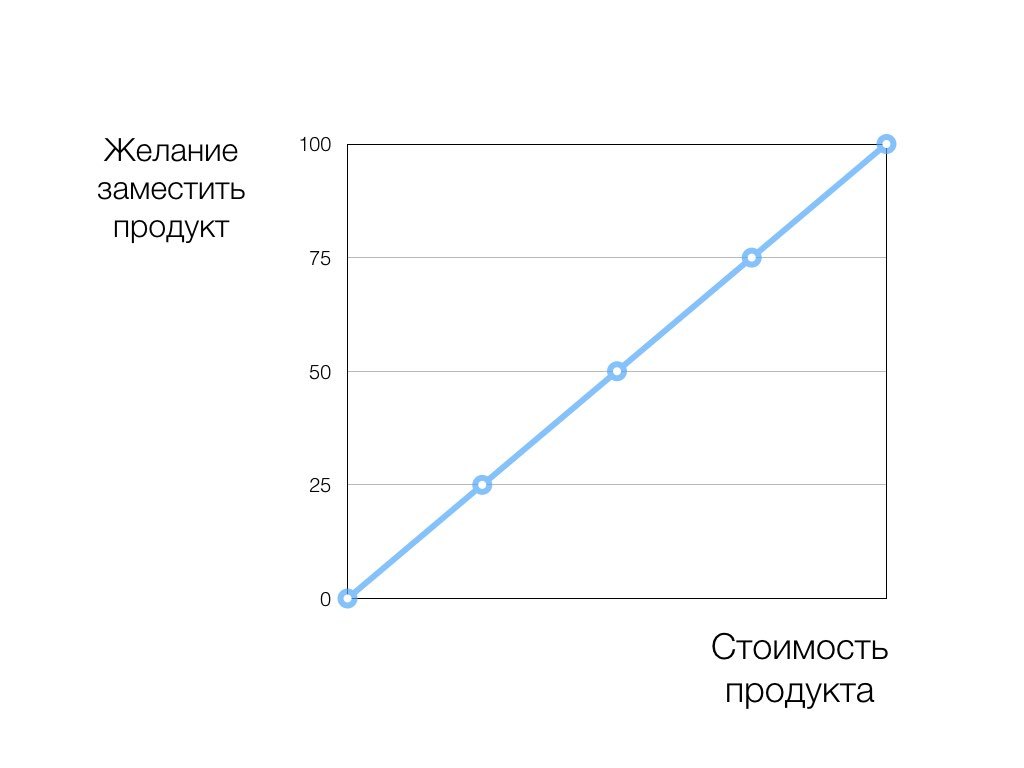The main desire of the licensee is to replace the licensed product.

The text is written under the influence of professional deformation and can biasedly reflect reality. However, all these examples are true, and the author has learned their details from the actors in the conflicts.
Lawyers are constantly faced with deviations from the planned behavior of the parties to the agreement. They are like lifeguards at sea. If for a ship's captain a wreck is an extraordinary event and does not happen to the majority in his entire career, then for rescue workers a shipwreck, like a lawyer, breach of contract is a completely ordinary thing.
')
We hope that the information accumulated during participation in conflicts will help you not to get into trouble.
Picture to attract attention, does not need explanations. Better consider other factors leading to a break in relations.
You have nothing to worry about if your solution is so unique that there is simply no substitute for it. If, in principle, your product can be repeated, maybe not now, but after some time, then such a story can happen.
Example 1. How a dream client ruined a company
For one of the market leaders, programmers wrote a mobile application — a user's personal account with the required set of functions. Signed a very profitable license agreement for a period of 12 months + a contract for maintenance and revision. It seemed that happiness had come and the client of the dream would ensure the development of the company for many years.
But at the end of the contract term, the licensee refused to renew, and switched to a new application, which he created on his own. At the same time, users did not even notice the changes - the interface and functionality of the program were copied exactly.

What mistakes did the licensor make?
He did not protect his product from copying. In this case, the design was provided by the customer and measures for the protection of design works are not applicable. Also, registration of the program itself would not give anything, since the code was completely rewritten. However, the interface and functionality of the program could be protected by patents - there are software patents not only in the USA, but also in Russia.
Example 2. How a customer replaced a product before entering into a contract
It is known that tasty contracts can be obtained from the state. But there is a competition. It was believed that all people are brothers and will keep their promises, so the development of the program began even before the organization of the competition. When the prototype was ready and handed over to the customer, the competition for the client changed their mind and significantly reduced the cost of development. As a result, the developer himself did not participate in the competition, but finally, slamming the door, forbade the use of design.

What mistake did the licensee make?
The customer handed over the prototype to another developer who copied the design. And in Russia, design works are protected not only by patent, but also by copyright. The original author was able to justify their design rights and prove borrowing. Compensation has been paid. However, in the case of a design change, most likely there would be only a loss. It sounds trite, but "Gentlemen, do not postpone the conclusion of the contract indefinitely."
Example 3. We will simply not pay anymore.
A customer can replace a licensed product not just with a new product, but with a refinement of the licensed product. In this case, the argument is something like this: yes, initially it was your product and we agree to pay for it, but now we have finalized it ourselves for ourselves and in fact this is our development (albeit based on yours).
In such disputable situations, the terms of the license agreement are of particular importance.

How to use license audit?
The licensor must include in the contract the right at a certain frequency and, in a predetermined manner, to verify the use of the software by the Licensee and its sublicensees for compliance with the requirements and restrictions established by the Contract. In the event of litigation, cases are lost due to the lack of evidence of a violation of rights. Licensed audit - this is an opportunity by checking the performance of the contract to obtain evidence of its violation.
The subject of verification may be any facts relating to the use of the program and database, including confirming compliance with the prohibition on making changes and copying. It is necessary to secure the right to access the devices of the licensor and to require a demonstration of the work with the program in accordance with the terms of the contract.
The licensee must be obliged to provide assistance to the licensors in the exercise of their right to conduct a licensing audit, including responding to inquiries and requirements and taking other actions that may be required to implement the licensor’s right to audit.
If the Licensee interferes with the licensing audit by the Licensors or does not properly perform its duties to facilitate the licensing audit, or during the audit significant violations are identified, the licensor will be entitled to withdraw from the contract unilaterally out of court.
If in the course of the licensing audit there are revealed insignificant violations of the license conditions, the licensee is obliged to pay a fine and stop the violation.
This description is in general terms, but the essence is clear - the licensor must have real tools to monitor compliance with the contract. And the more concretely and in more detail you paint these tools on the shore, the more chances there will be for extending the contract.
If you have your positive or negative examples, please share in the comments.
Source: https://habr.com/ru/post/298476/
All Articles